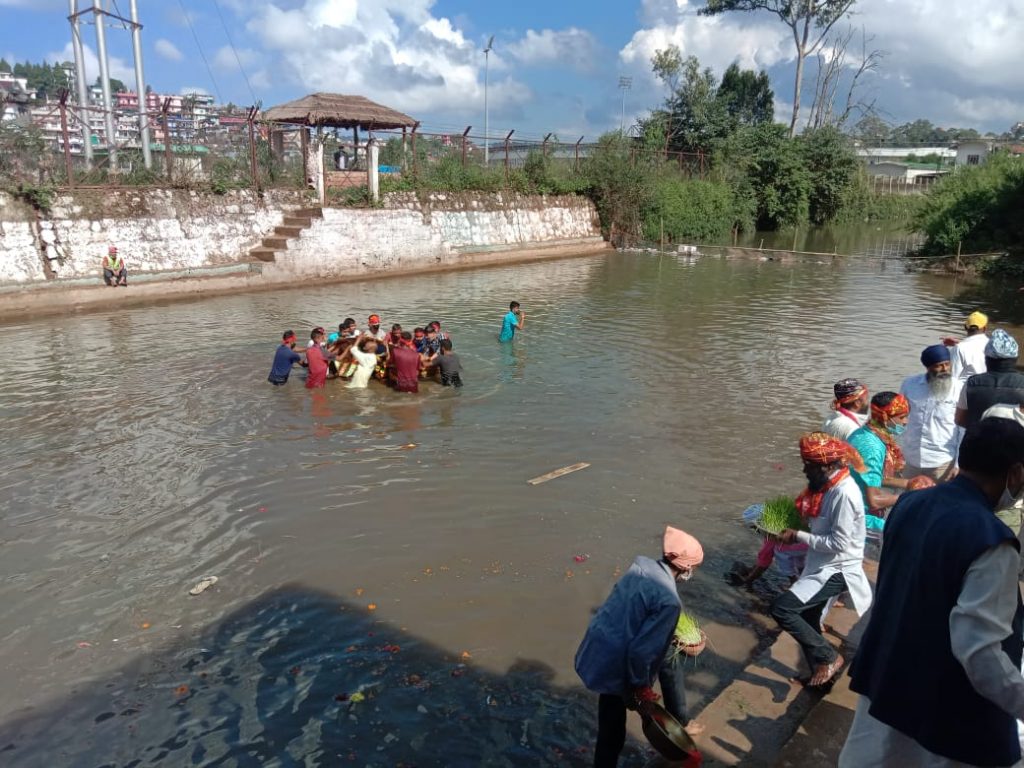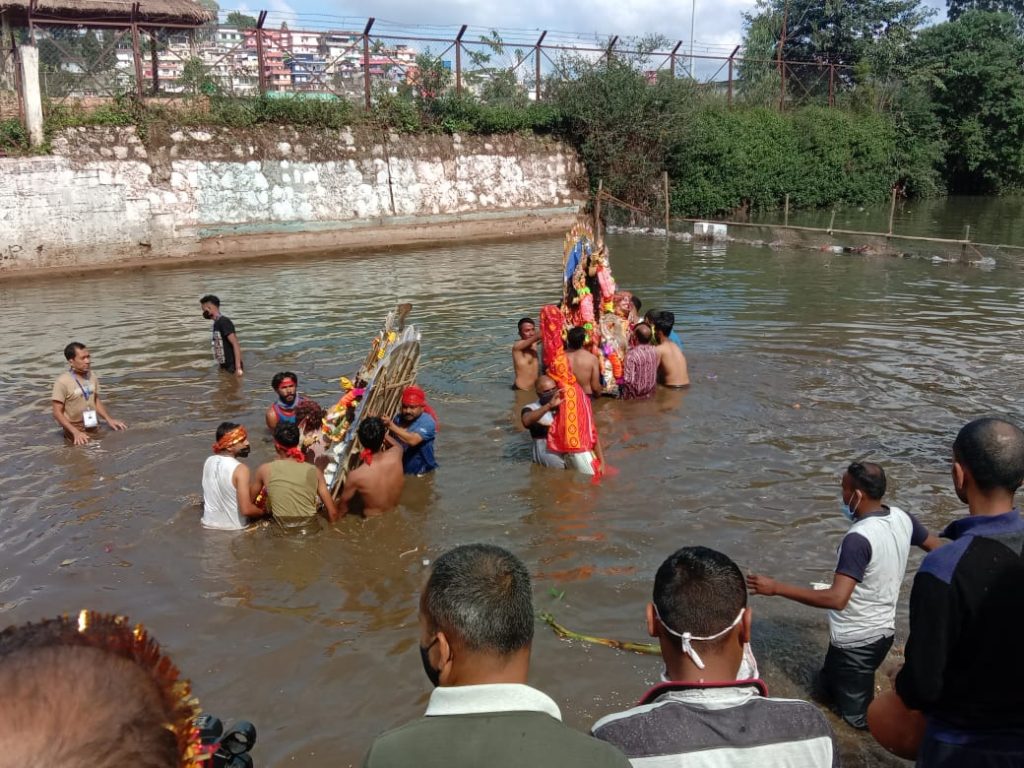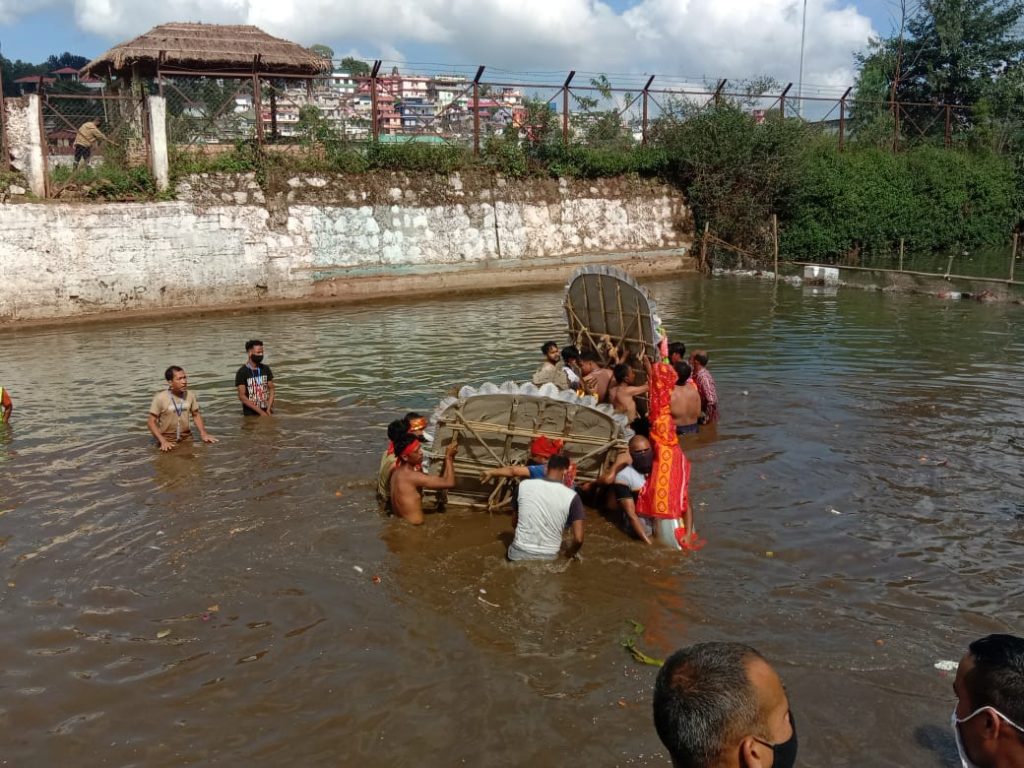Shillong, Oct 15: The festival of Dussehra, also known as Vijayadashmi, came to a conclusion on a solemn note across Meghalaya on Friday as Covid-19 restrictions ensured that celebrations were kept to the minimum.
Unlike the pre-Covid times where huge gatherings, drum beats and processions were the norm for sending-off Goddess Durga after her brief stay on Earth, this year processions or gathering were not allowed in view of the pandemic with only 20 people allowed for the goddess’ idol immersion at various points across the state.
 Central Puja Committee said they want to ensure that the Durga Puja celebrations in Meghalaya become a model to others in view of the pandemic. Thus, the entire process was more of a ritual than actual celebration.
Central Puja Committee said they want to ensure that the Durga Puja celebrations in Meghalaya become a model to others in view of the pandemic. Thus, the entire process was more of a ritual than actual celebration.

Arrangements in Shillong
In shillong, idols of Goddess Durga were immersed at Wahumkhrah river at a makeshift point in Polo. Similar arrangements were made at Tura, Jowai and other parts of the State.

Arrangements in Tura
In Tura, the idols were immersed at Babupara, following the laid down Covid-19 protocols.
Arrangements in Jowai
In Jowai, the immersion of the Goddess idols was done at Wah Myntdu, Pynthor Wah and was witnessed by the SP of West Jaiñtia Hills, BD Marak and other District Officials.
After the immersion the Puja Committee used a rope to tie the Goddess so that it will be removed within 24 hours from the river. Volunteers also removed all plastic materials from the river and collected them in a box and bags so that these platic items can be disposed off properly.
A total of 261 puja pandals were setup across the state with 127 in Khasi Hills, 12 in Jaintia Hills and 122 in Garo Hills. In Shillong, 66 pandals were setup.
Vijayadasami marks the end of Durga Puja, the biggest festival of eastern India. It represents the Victory of Good over Evil, with celebrations in many variations across the country.



